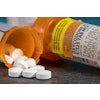The U.S. Food and Drug Administration (FDA) announced an action plan to combat what it calls the "opioid abuse epidemic."
Robert Califf, MD, the administration's deputy commissioner for medical products and tobacco, and other FDA leaders announced the administration's action plan on February 4.
"We are determined to help defeat this epidemic through a science-based and continuously evolving approach," Dr. Califf stated in a press release. "This plan contains real measures this agency can take to make a difference in the lives of so many people who are struggling under the weight of this terrible crisis."
The administration offered an eight-point plan, which was spelled out in further detail in a same-day online publication in the New England Journal of Medicine (NEJM, February 4, 2016).
In the NEJM special report, Dr. Califf and co-authors wrote that the "number of annual opioid prescriptions written in the United States is now roughly equal to the number of adults in the population" and "simply reinforcing opioid-related activities that are within the FDA's traditional regulatory scope will not suffice to stem the tide."
The FDA's plan includes the following:
- Re-examining the risk-benefit paradigm for opioids and ensuring that the agency considers their wider public health effects
- Convening an expert advisory committee before approving any new drug application for an opioid that does not have abuse-deterrent properties
- Assembling and consulting with the administration's pediatric advisory committee regarding a framework for pediatric opioid labeling before any new labeling is approved
- Developing changes to immediate-release opioid labeling, including additional warnings and safety information that incorporate elements similar to the extended-release/long-acting opioid analgesics labeling that is currently required
- Updating risk evaluation and mitigation strategy requirements for opioids after considering advisory committee recommendations and review of existing requirements
- Expanding access to, and encouraging the development of, abuse-deterrent formulations of opioid products
- Improving access to naloxone and medication-assisted treatment options for patients with opioid-use disorders
- Supporting better pain management options, including alternative treatments
For more information, visit the FDA website.


















